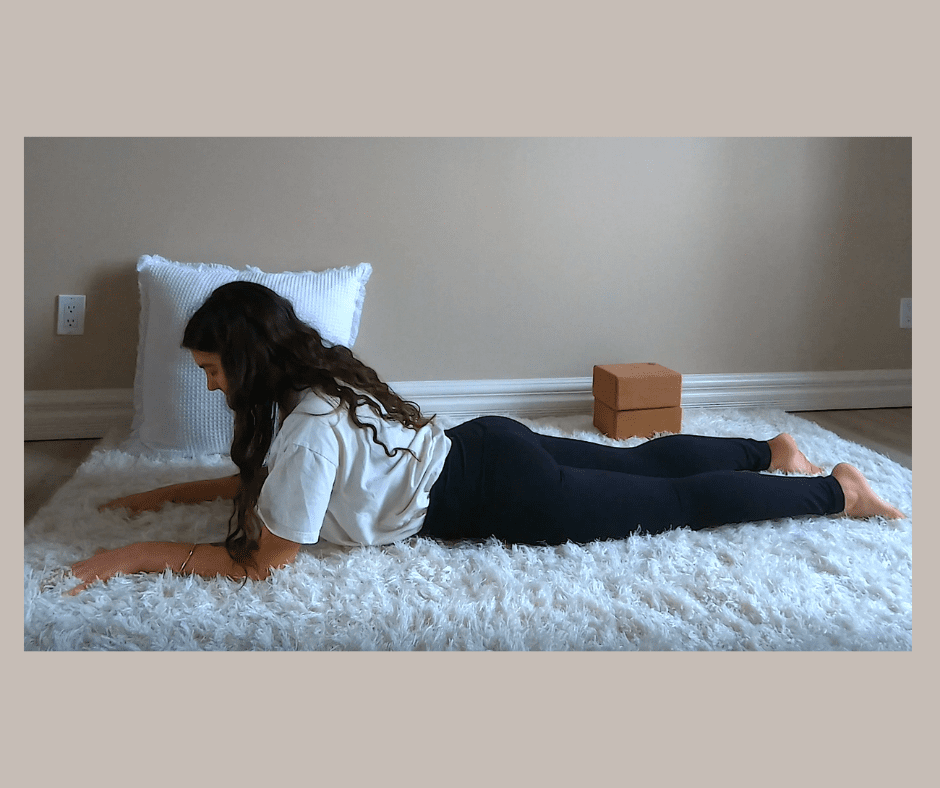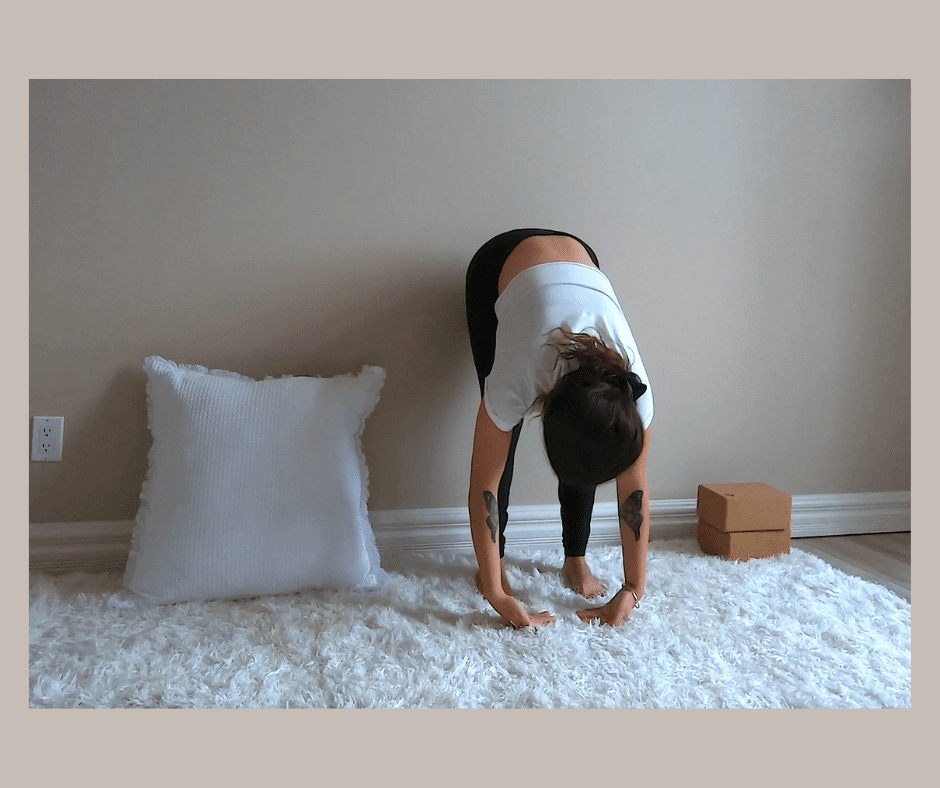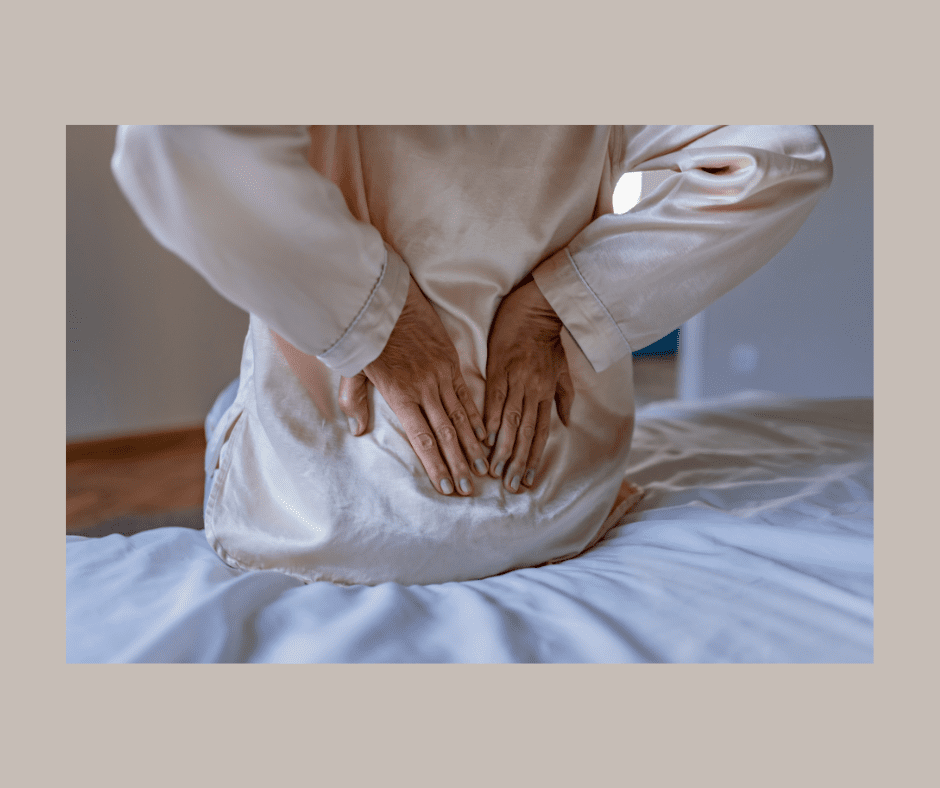Does your lower back need a little love?
We have just the Yin Yoga for that! In this short article we will:
-Discuss what lower back pain is
-How to get to know your lower back
-2 Yin Yoga poses (with accompanying videos!) to try right now.
So, let’s dive right in!
1. What is Lower Back Pain?
‘Lower Back’ is an umbrella term that is often used to point to the lower back complex.
What does this mean?
The lower back is more than just the lower part of the spine.
Along with the lumbar vertebrae, the lower back region includes 2 small joints known as the sacral iliac joints (on either side of the pelvis), muscles and tendons that surround the spine, and the sacrum.
Understanding the lower back as a complex, rather than a distinct point, can help you to identify the exact location and cause of your lower back pain.
Pain in the lower back region of the body is often due to:
– Lack of core or hip strength
-Tilted pelvis or imbalanced pelvis
-General structural issues in the spine
-Strain in the muscles, tendons or sacral iliac joints
-Arthritis
-Muscle tension
-Disk injuries
-Stress
2. Get to Know Your Lower Back
Now that we’ve covered what lower back pain is (or can be) and its common causes, let’s discuss how you can provide self-care for your lower back region.
Here are some questions to ask yourself:
-When do I feel the pain the most: In the morning? After sitting at the desk? After movement?
-Does the pain arise while I’m moving, or when I’m still?
-Does my pain get worse with stress?
-Where do I feel the pain the most? In the spinal column, muscles, or lower, in the pelvis?
-Does the pain radiate, or is it sharp and direct? Is it hot? Does it feel achy?
In Yoga, we seek to begin any self-care practice with acceptance. Ask yourself the above questions and tune into your body to hear the answers. It’s amazing how much insight you can gain simply through listening in!
3. Two Yin Yoga Poses to Try Right Now
Yoga is all about empowering yourself through movement, mindfulness, and awareness.
Yin Yoga in particular focuses on the health of the joints and connective tissues through long-held, supported poses. It’s known to support circulation and energy flow in the targeted areas.
The 2 Yin Yoga poses below invite you to 2 very different approaches to lower back care. We’ll discuss both so that you can make an informed and loving choice for yourself. Please consult your healthcare practitioner before trying any exercise.
1: SPHINX POSE
See instructions and video below.

A deep compression of the sacral-lumbar arch.
Provides blood flow to the lower back region.
May benefit those with bulging or herniated disks, or strained tendons.
To practice:
– Begin laying on your belly, stack your palms and rest your forehead on the backs of your hands. Stay here for a mild version.
– Or, slide the elbows below your shoulders, propping up on your forearms. If this is too intense, slide your elbows forward to lessen the compression.
– You should feel compression in the lower back, but NO sharp pains, aching pains or heat. If you experience any of these, come down.
To release:
– Widen your elbows, lower your chest, and rest your head again on your stacked palms. Stay here for as long as you like. When you’re ready, roll over onto your back and hug your knees in.
–
Sphinx pose can be helpful in re-energizing the lower back region. Avoid this pose if you have scoliosis, muscle tension, or pain in the sacral iliac joints.
SPHINX POSE VIDEO:
2: DANGLING POSE
See instructions and video below.

A deep stretch for the lower back.
May benefit those with tense and tight muscles around the spine or postural misalignment due to tight hamstrings.
Provides a massage for the internal organs.
To practice:
– Begin standing near a wall. Plant your feet a few inches from the wall and place your sit bones on the wall.
– Bend your knees and rest your elbows on your top thighs. Relax your head and neck down, letting gravity decompress the entire spinal column. If there is lots of sensation, stay here.
– Or, release the backs of your hands to the floor, increasing the stretch. Keep your knees bent. Note: this should not feel like a big strain on the back or hamstrings!
To release:
– Bend your knees and release your hands to the floor, then slowly roll back up to standing. Stretch your arms upward and then release, standing tall.
–
Dangling pose can be helpful in relieving muscular tension around the lower back region. Avoid this pose if you have a lower back disorder that does not allow you to fold forwards or if you have high blood pressure.
DANGLING POSE VIDEO:
I hope this article has been helpful for you!
Remember to always listen to your body, and only do what feels right for you, day by day.
Elevate your daily self-care routine and feel your best with just 10 Min of Yin Yoga a day! Check out the full 21 DAYS OF YIN YOGA video series here:
Love,
Jaylyn


